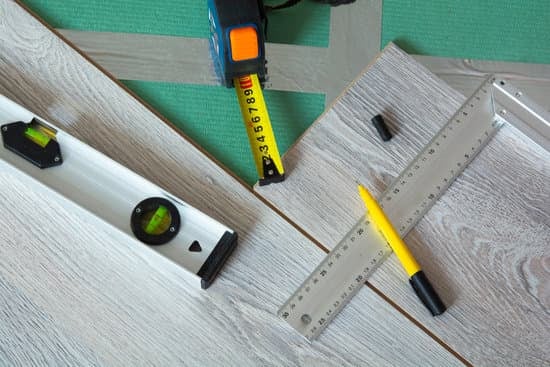What do lenders look for on a home improvement loan? When it comes to applying for a home improvement loan, knowing what lenders consider during the approval process can significantly impact your chances of securing the financing you need. From credit scores to specific project plans, understanding the key factors that lenders look for is crucial in preparing a strong loan application.
A home improvement loan is a type of financing specifically designed for homeowners who want to renovate, repair, or upgrade their property. Whether it’s adding a new room, remodeling a kitchen, or making energy-efficient improvements, these loans provide the funds needed to enhance the value and livability of a home. However, obtaining approval for such loans involves meeting certain criteria set by lenders.
In this article, we will explore the essential aspects that lenders evaluate when considering a home improvement loan application. Understanding these factors and taking proactive steps to address them can increase your chances of securing the financing needed to realize your renovation goals. From credit score requirements to debt-to-income ratios, we will provide valuable insights and tips on how you can position yourself as a strong candidate for approval.
Credit Score and History
A good credit score and history are crucial factors that lenders consider when evaluating a home improvement loan application. Lenders use this information to assess the borrower’s creditworthiness and financial responsibility. A high credit score indicates that the borrower is reliable and has a track record of managing their finances well. On the other hand, a low credit score can raise red flags for lenders, making it more challenging to secure a loan.
In addition to the credit score, lenders also review the applicant’s credit history, which provides a detailed record of their borrowing and repayment activities. Consistent on-time payments and responsible credit management can positively impact an individual’s credit history. Conversely, missed payments, defaults, or bankruptcies may negatively affect the credit history, making it difficult to obtain favorable terms on a home improvement loan or any other type of financing.
To improve their chances of securing a home improvement loan with favorable terms, applicants should focus on maintaining a good credit score and history. These can be achieved by paying bills on time, keeping balances low on credit cards, avoiding opening multiple new accounts in a short period, and regularly checking their credit report for errors.
In addition to these efforts, individuals should make sure they understand what their current credit score is before applying for a loan. This way they can take proactive steps to improve it if necessary before submitting their application to potential lenders.
| Aspect | Impact |
|---|---|
| Credit Score | Key determinant of borrowing eligibility; higher scores mean lower risk for lenders |
| Credit History | Evaluates past financial behavior; responsible borrowing builds positive history |
| Tips for Improvement | Pay bills on time, keep balances low, avoid new accounts; know current score before applying |
Income and Employment Stability
When applying for a home improvement loan, lenders will closely examine your income and employment stability. Lenders want to ensure that you have a reliable source of income to make monthly loan payments. Showing stable employment history will also assure lenders that you are capable of repaying the loan.
To demonstrate stability to potential lenders, it is important to provide proof of consistent employment, such as W-2 forms, pay stubs, or tax returns. If you are self-employed, providing profit and loss statements or business tax returns can help show steady income.
Additionally, it is advisable to avoid making major career changes before applying for a home improvement loan in order to maintain stable employment history. Individuals who have been employed at the same company for several years or who work in industries with high job security may be more appealing to lenders. By showing consistent annual earnings and maintaining stable employment, borrowers can increase their chances of getting approved for a home improvement loan.
Moreover, having multiple streams of income can also strengthen your application. If you receive income from rental properties or investments, be sure to include documentation proving these additional sources of revenue when applying for the loan. Lenders consider all forms of income when evaluating an applicant’s ability to repay the loan. Thus, applicants with diverse sources of income may be viewed more favorably by lenders and have an increased likelihood of being approved for a home improvement loan.
| Aspect | Details |
|---|---|
| Sources of Income | W-2 forms, pay stubs, tax returns; profit and loss statements or business tax returns if self-employed. |
| Employment History | Longevity with current employer; avoiding major career changes before applying. |
| Additional Income Streams | Rental properties; investments; diverse sources of income. |
Loan-to-Value Ratio
When applying for a home improvement loan, one of the key factors that lenders look at is the loan-to-value (LTV) ratio. This ratio compares the amount of the loan being requested to the appraised value of the property. Lenders use this ratio to assess the risk of the loan and determine whether or not to approve the application. Here are some important points to consider when it comes to the loan-to-value ratio:
- Understanding LTV Ratio: Before applying for a home improvement loan, it’s crucial to understand what the loan-to-value ratio is and how it is calculated. The LTV ratio is calculated by dividing the amount of the loan by the appraised value of the property. For example, if you want to borrow $50,000 for a home improvement project and your home is appraised at $200,000, then your LTV ratio would be 25%.
- Improving LTV Ratio: A lower LTV ratio is more favorable when applying for a home improvement loan. To improve your LTV ratio, you can either increase your down payment or work on increasing the value of your property through renovations or repairs before applying for the loan.
- Lender Requirements: Different lenders may have specific requirements when it comes to acceptable LTV ratios for home improvement loans. It’s important to research and compare different lenders to find one that offers favorable terms based on your current financial situation and planned home improvements.
Understanding and being proactive about your loan-to-value ratio can significantly impact your chances of securing approval for a home improvement loan. By carefully considering this factor and taking steps to improve it, you can strengthen your overall loan application and increase your likelihood of approval.
Specific Project Plans
When applying for a home improvement loan, it is essential to have specific project plans in place. Lenders want to know exactly what the funds will be used for and having detailed plans can greatly improve your chances of loan approval.
Importance of Detailed Plans
Having a clear and detailed outline of your home improvement project shows lenders that you have carefully considered the expenses, materials needed, and labor involved. It also demonstrates that you are serious about the project and are more likely to use the loan funds responsibly. Specific plans can include architectural drawings, cost estimates from contractors, and a timeline for the project.
Eligible Projects
Not all home improvement projects may be eligible for a loan, so it is important to understand what types of projects lenders typically approve. Generally, renovations that add value to the property are favored by lenders. This can include kitchen or bathroom remodels, adding an additional room, or structural repairs. Make sure your project plans align with what lenders consider as worthy investments.
Professional Assistance
Seeking professional assistance from architects or contractors when creating your project plans can lend credibility to your application. Their expertise can ensure that your plans are comprehensive and accurately reflect the scope of work needed for the project. Additionally, having professional input can give lenders confidence in the feasibility and quality of your home improvement plans.
Property Appraisal
When applying for a home improvement loan, one of the crucial factors that lenders look at is the property appraisal. This process involves determining the current market value of your home, which helps the lender assess the amount of risk involved in providing you with a loan. It also ensures that the loan amount is not higher than the actual value of the property.
Role of Property Appraisal
The property appraisal is essential because it provides an unbiased evaluation of your home’s value by a professional appraiser. Lenders use this information to make informed decisions about approving your loan application. Additionally, it helps protect you as a borrower from borrowing more money than your property is worth.
Preparing for a Property Appraisal
To prepare for a property appraisal, it’s beneficial to ensure that your home is well-maintained and free from any major issues that could negatively impact its value. You can also gather information about recent improvements or renovations that may add value to your property. It’s important to be present during the appraisal process to provide relevant information and address any questions that the appraiser may have.
Tips for Success
To increase your chances of a favorable property appraisal, consider enhancing curb appeal, addressing any maintenance issues, and providing the appraiser with a list of recent home improvements. Additionally, be prepared to provide documentation of any upgrades or renovations that may contribute to an increase in your home’s value. By preparing in advance and being proactive throughout the appraisal process, you can potentially improve your chances of securing approval for a home improvement loan.
Debt-to-Income Ratio
When applying for a home improvement loan, one of the key factors that lenders look at is the debt-to-income ratio. This ratio is a measure of an individual’s monthly debt payments compared to their monthly gross income. Lenders use this information to assess a borrower’s ability to manage monthly payments and take on additional debt. Here are some important points to consider regarding the debt-to-income ratio:
- Reducing Debt: One way to improve your debt-to-income ratio is by reducing your existing debt. This can be achieved by creating a budget and prioritizing paying off high-interest debts such as credit cards or personal loans.
- Increasing Income: Another strategy to improve your debt-to-income ratio is by increasing your income. This can be done through seeking higher-paying job opportunities, taking on a part-time job, or finding additional sources of income.
- Managing Future Debt: It’s essential to avoid taking on new debts before applying for a home improvement loan. This includes avoiding large purchases on credit or taking out additional loans that could negatively impact your debt-to-income ratio.
By carefully managing and reducing existing debts, as well as increasing your income, you can significantly improve your debt-to-income ratio and increase your chances of getting approved for a home improvement loan.
Remember, each lender may have different requirements when it comes to debt-to-income ratios, so it’s crucial to research lenders and understand their specific criteria before applying for a loan. Paying attention to this aspect and making the necessary adjustments can greatly strengthen your loan application.
Required Documentation
When applying for a home improvement loan, ensuring all the necessary documentation is in order is crucial for a smooth loan application process. Lenders will require various documents to assess your financial situation and determine your eligibility for the loan. It’s important to be prepared and organized when gathering these documents to increase your chances of approval.
Some of the required documentation for a home improvement loan may include proof of income, such as pay stubs, W-2 forms, or tax returns. Lenders will want to see that you have a stable source of income to ensure that you can make regular payments on the loan. Additionally, you may need to provide bank statements and investment account statements to demonstrate your financial stability and ability to manage your finances responsibly.
Another essential document that lenders will require is a list of your existing debts and obligations. This includes credit card balances, student loans, car loans, and any other outstanding debt. Lenders will use this information to calculate your debt-to-income ratio, which is a significant factor in the loan approval process. It’s important to be transparent about your existing debts and work on reducing them if possible before applying for a home improvement loan.
In addition to proof of income and existing debts, you may also need to provide documentation related to the property itself. This could include property deeds, insurance information, and recent property tax statements. The lender may also require proof of identification and residency, such as a driver’s license or utility bills. Being well-prepared with all the necessary documentation can expedite the loan application process and increase your chances of securing the funds needed for your home improvement project.
Conclusion
In conclusion, securing a home improvement loan involves various factors that lenders consider before approving the loan. A good credit score and history are crucial, as well as stable income and employment. It is also important to understand and improve the loan-to-value ratio and debt-to-income ratio. Detailed project plans and property appraisal also play significant roles in the approval process.
Therefore, it is vital for individuals seeking a home improvement loan to take proactive steps in strengthening their loan application. This may include working on improving their credit score, maintaining stable employment, reducing debt, and organizing all necessary documentation. By taking these necessary steps, borrowers can increase their chances of securing a home improvement loan and turning their renovation dreams into reality.
In closing, being well-prepared and informed about what lenders look for in a home improvement loan application can make a significant difference in the approval process. By following the tips provided in this article and taking the time to address any potential weaknesses in their application, borrowers can position themselves for success when applying for a home improvement loan.
Frequently Asked Questions
Are Home Improvement Loans a Good Idea?
Home improvement loans can be a good idea for homeowners who need to make significant repairs or upgrades to their property but may not have the funds readily available. These loans can provide the necessary financing for projects that can increase the value of the home and improve overall living conditions.
However, it’s important to carefully consider the terms, interest rates, and fees associated with these loans before making a decision.
What Is the Average Length of a Home Improvement Loan?
The average length of a home improvement loan typically ranges from 2 to 12 years, depending on the amount borrowed and the lender’s terms. Shorter-term loans may have higher monthly payments but result in less interest paid over time, while longer-term loans offer lower monthly payments but greater overall interest costs.
It’s important for borrowers to carefully consider their financial situation and ability to repay the loan within the agreed upon timeframe.
What 4 Things Do Lenders Consider When Judging if You Qualify for Your Loan?
When judging if a borrower qualifies for a home improvement loan, lenders consider four main factors: credit score, income and employment history, existing debt obligations, and the value of the property being improved. A strong credit score demonstrates a borrower’s ability to manage debt responsibly, while a stable income and employment history indicate their capacity to make regular loan payments.
Lenders also evaluate existing debt-to-income ratio to ensure that borrowers can handle additional financial obligations. Finally, the value of the property serves as collateral for the loan and influences eligibility and potential borrowing limits.

I’m thrilled to have you here as a part of the Remodeling Top community. This is where my journey as an architect and remodeling enthusiast intersects with your passion for transforming houses into dream homes.





